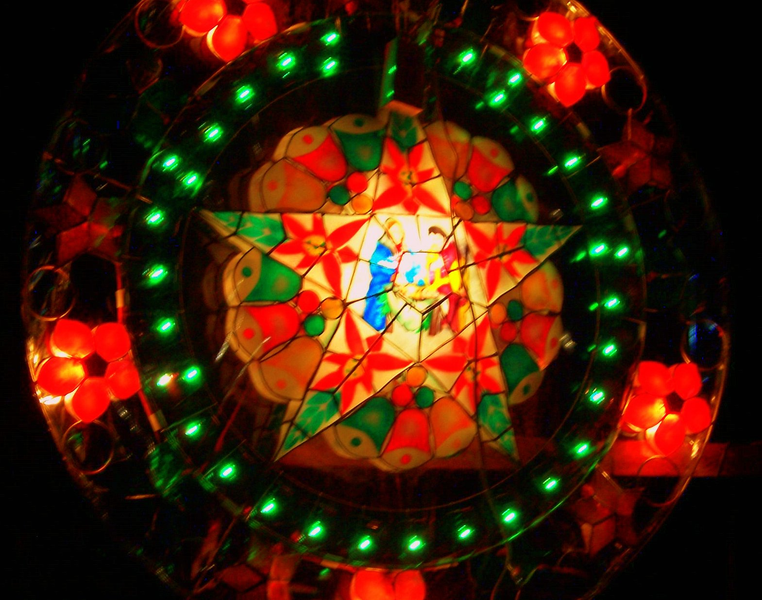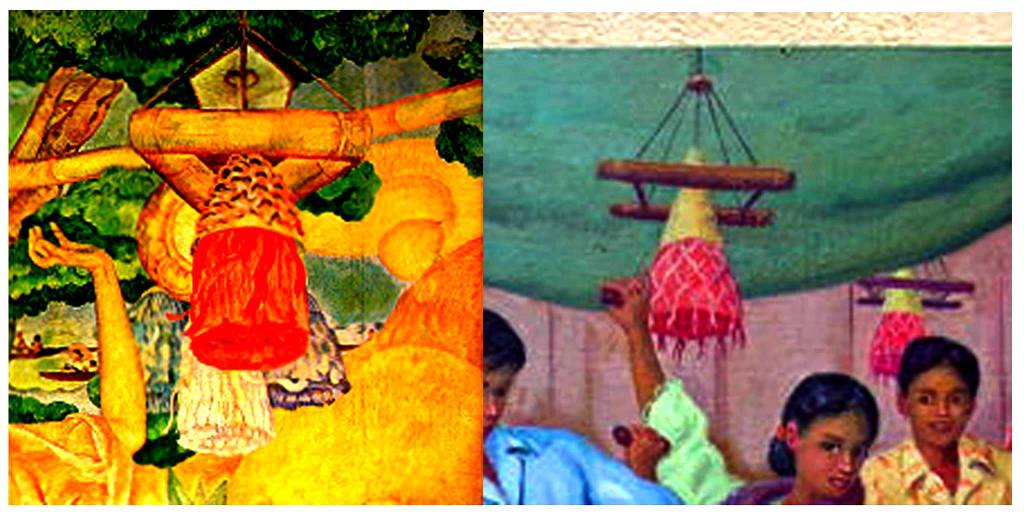Filipino Christmas celebration is colorful, lively, full of traditions, bright and definitely twinkling. One of the most iconic symbol of Filipino Christmas spirit, is the Christmas lantern or locally known as “paról”. The star-shaped lanterns are displayed hanging outside the house, along the busy streets of the cities and even in provincial towns and small villages. May it be a parol with simple or intricate designs, for Filipinos it is an expression of shared faith and hope. It also symbolizes the triumph of light over darkness and Filipinos’ goodwill during Christmas season.
For Filipinos, it is a known belief that parol making and hanging them outside their homes is a representation of the star of Bethlehem that guided the Three Wise Men to the manger of baby Jesus. However, if we’ll look at the history of paról it can be traced back during the Spanish era in the Philippines, when the Spaniards brought Christianity to the islands. Parols were initially used to light the way to church to faithfully attend the 9-day Simbang Gabi or Misas de Aguinaldo, that begins on the 16th of December, a devotion for petition of special favors. After coming home from hearing the mass, instead of putting away the lantern somewhere else, people would hang it outside the house.

The real origin of the Filipino “Parol” can be linked to the Mexican “luminaria” or clay-pot lantern placed outside the window during the El Posada, when villagers re-enact Joseph and Mary’s journey to Bethlehem in search of a room to deliver the baby Jesus. When we had our Simbang Gabi during the Spanish times, our ancestors placed a lantern made of bamboo and Japanese paper with a tail made of paper outside their windows, as the town priest would knock on every door from one end of the village to the church. The parol symbolizes that their home is open and ready to receive Jesus Christ (as we know the 9-day novena masses represents the 9 months Christ was in Mary’s womb), also, it symbolizes that they are awake and ready to join the procession towards the church. The people walking carries a bamboo with the Star lantern to light their way- and this is closer to the Star of Bethlehem metaphor.

Comparing to the modern representation of parol and its historical origin, the audience for the Parol is the unborn Jesus Christ himself along with Mary and Joseph, instead of the Three Kings.

Photo by Ike Jamilla
http://emjamilla.googlepages.com
Paróls are lanterns and traditionally made of bamboo, papél de japón (Japanese paper) and illuminated with candle or kalburo (carbide). As times goes by, the lantern evolved into a more intricate, lavish and brightly lit Christmas ornament. Aside from the traditional design of parols, other materials are used such as capiz shells with elaborate lights became popular too. Adding to the meaning of parol, the lantern also demonstrates the craftsmanship of Filipinos. Many communities, such as villages, schools, and groups hold competitions to see who can make the best paról. In the province of Pampanga, an annual Giant Lantern Festival is held, which attracts various craftsmen from across the archipelago.
Yuletide season is definitely bright and twinkling in the Philippines, no wonder with the paról, it became the Festival of Lights. To appreciate and see the peak of the Festival of Lights in the Philippines, one must travel at night from December 16th up to January 6th. All kinds of paróls will make your holidays merrier and bright. Filipinos’ Christmas lantern, a tradition, an art and an emblematic symbol of Christmas.
If you enjoyed the bits of information about the meaning of Parol, and wants to read more from The Mixed Culture, make sure to subscribe to my mailing list to read my latest blog straight from your inbox. Or, follow me on Facebook orInstagram for the latest scoop from me. Feel free to email me for any questions or comment below.
Con mucho amor,
Imelda❤

Hi po Ms. Imelda,
Thank you for writing and sharing this po! The information you wrote is super helpful as I research the parol for a story I’m writing. I will tag you as well and provide your website’s link if that is alright.
Happy Christmas po!
With love and big smiles,
SW
I’m glad that it will help you in some sort related to your work Yes, feel free to tag me. All the best!
Hi Imelda,
Thank you for promoting Filipino culture. I have to write to you though to correct the wrong assumption that the Parol originated as a symbol of the Star of Bethlehem. That has been propagated as a myth, but is historically incorrect.
The real origin of the Filipino “Parol” is the Mexican “luminaria” or clay-pot lantern placed outside the window during the El Posada, when villagers re-enact Joseph and Mary’s journey to Bethlehem in search of a room to deliver the baby Jesus. When we had our Simbang Gabi during the Spanish times, our ancestors placed a lantern made of bamboo and Japanese paper with a tail made of paper outside their windows, as the town priest would knock on every door from one end of the village to the church. The parol symbolizes their home is open and ready to receive Jesus Christ (as we know the 9-day novena masses represents the 9 days Christ was in Mary’s womb), also symbolizes they are awake and ready to join the procession towards the church. The people walking carries a bamboo with the Star lantern to light their way- and this is closer to the Star of Betlehem metaphor.
But in reality- it is the luminaria. The earliest Parols did not have a star, just a box lantern with a tail.
Thus the audience for the Parol is the unborn Jesus Christ himself along with Mary and Joseph, instead of the Three Kings or Santa Claus. See the difference?
Correction…..9 months inside Mary’s womb.
Hello Imelda,
We decorate our cubicles at work, and my mom got me some mini-parols from PI, so I’ve put them up! I’ll be using some of your descriptions to share with my co-workers, to provide a little holiday cheer and Filipino knowledge.
Many thanks and Maligayang Pasko from Los Angeles!
Alexis
Hi Alexis,
That’s so nice and keep Filipino tradition alive!. Go ahead and let me know what’s your colleagues thought about them. Share some pictures!
Cheers and Maligayang Pasko from Montreal! 🙂
Warmest regards,
Imelda
the article is so timely specially Christmas is approaching…
thank you for the info.. it catches my attention to read it till the end.. may i ask permission to read some lines of your article to relay to others on why we have parol during Christmas. thank you.
Hi Angelo,
Thank you for reading it. Sure go ahead and share it. That’s the reason why I wrote it, to let others know the meaning of parol as many forget or dont’t it especially the new generation.
Warmest regards,
Imelda
Hi there! I own a travels and tours company and our Facebook page will be featuring 95 facts about the Filipino Christmas. I got some insights from your article, and I just want to let you know that you’ll be tagged soon when the “parol fact” is posted. To check the post out, you can like our page. It’s http://www.facebook.com/lakwatserahandbook. Thanks!
hello!thank you for letting us know. so exciting! sure go ahead! 🙂 and feel free to tag us anywhere 🙂 I also have a FB page if you want to tag it as well…so TAG it away!!! Good luck and if there’s anything you see in my site that is useful for you, feel free to use them all 🙂
Much appreciation,
Imelda